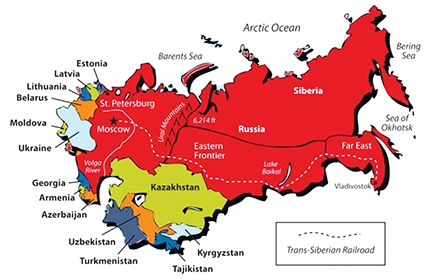Future of Russia’s “Breakaway Empire”
As the West-Russia tensions have grown over the past years, one theater of Russian foreign policy, namely management of breakaway regions, has largely fallen out of analysts’ works. Where, in the first years following the collapse of the Soviet Union, Russia had to manage breakaway conflicts in small and poor Georgia and Moldova, by early 2019, Moscow’s responsibilities have increased exponentially. In a way Nagorno-Karabakh was also under the Russian geopolitical influence, although the Russians were not directly involved.
Following the Ukraine crisis, Crimea, Donetsk and Luhansk were added to Russia’s “Breakaway Empire”. This means that at a time when economic problems are looming large within Russia, Moscow has to spend more on multiple actors across the former Soviet space. This means that Russia’s broader strategy of managing breakaway conflicts, though not very much visible, could be coming under increasing stress. Where Russia previously used the conflicts in Moldova, Georgia and Ukraine to limit the ability of those countries to enter the EU/NATO, now Moscow is losing its ability to maneuver in so many diverse conflicts simultaneously. At times, various players are trying to play their own game independently from Moscow. In Transnistria, the geopolitical situation is troublesome for Moscow as Kiev and Chisinau at times consider constraining the breakaway territory, and Moscow can do little as it has no direct land or air route. In Abkhazia and South Ossetia, Russian forces watch as NATO exercises take place on Georgian soil, which suggests that, despite the Russian military footprint in the region, Western countries are continuing to expand their support for Georgia.
Without doubt, Russia will remain a dominant military power in the region and the breakaway territories will stay dependent on Moscow’s support. Yet, it will be increasingly difficult for Moscow to successfully pull the strings in several different theaters at once, particularly as the Russia is facing its own financial problems, increased Western efforts to confront its foreign policy, and “disobedience” from various separatist leaders.
Bad, but Still a Strategy
If Russia has any notion of a grand strategy in its recent foreign policy, it is certainly the purposeful creation of conflict zones and their management across the post-Soviet space. The fall of the Soviet Union was indeed a colossal geopolitical setback for Moscow as the country instantly lost portions of land on a scale rarely, if ever, seen in recorded history. But maintaining 11 buffer states (except for the Baltic states of Estonia, Latvia and Lithuania) around Russia has remained a cornerstone of the Kremlin’s foreign policy against Western military and economic encroachment. Russians knew that because of their own country’s low economic potential, the South Caucasus states would inevitably turn to Europe. The same would happen on Russia’s western frontier with Moldova and Ukraine, which have been more susceptible to Western economic and military potential because of geographic proximity and historical interconnections with Europe.
In a way, geopolitical trends also point towards the conclusion that Russia’s usage of breakaway territories to stop Western expansion in the former Soviet space is not working. True that Moscow needed, be it Abkhazia or Donetsk, to stop the countries in its “immediate neighborhood” from joining the EU/NATO. And to the Russians’ credit, it has worked: the West is hesitant to quickly make Georgia, Ukraine and Moldova the members of the EU/NATO groupings. But there are also signs that the Russian gambit that those very breakaway regions would undermine the integrity of Georgia and Ukraine has largely failed. Only Moldova might be regarded as a success for the Russians, as the country has still failed to unite around its geopolitical choice.
The point here is that although there are breakaway territories, Western expansion into Georgia and Ukraine continues through various means, importing a much “deadlier” weapon – economic influence – against that of traditional Russian military and religious influence.
By Emil Avdaliani
Map of the former Soviet Union. Source: kolovrat.org












